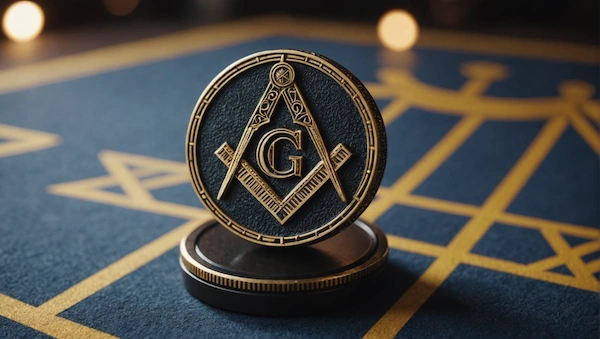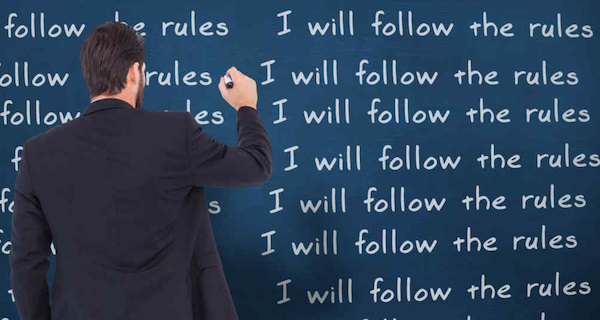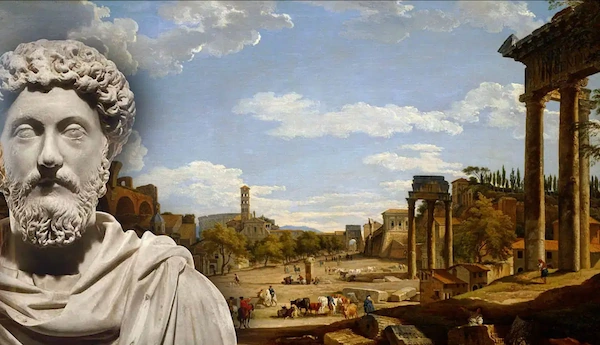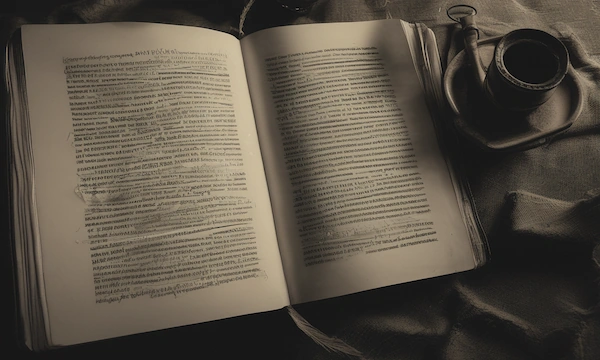
Digital Transformation and Global Connectivity
The digital revolution has transformed how Freemasons connect, learn, and practice their craft. Virtual lodges, online education platforms, and social media groups now complement traditional in-person meetings, creating hybrid forms of Masonic experience that transcend geographic limitations:
Virtual Lodge Meetings, accelerated by the COVID-19 pandemic, have enabled Masonic communication across distances that would have been unimaginable to previous generations. While ritual initiation remains in-person, educational programs and administrative functions increasingly utilize digital platforms.
Online Research Societies facilitate scholarly exchange among Masonic historians and esoteric researchers, creating virtual communities dedicated to preserving and interpreting Masonic knowledge. Organizations like the Philalethes Society and the Scottish Rite Research Society maintain digital archives and publication programs that advance Masonic scholarship.
Social Media Groups connect Masons across jurisdictional boundaries, facilitating informal exchange and creating global networks based on shared interests within the broader Masonic tradition. These digital communities often transcend traditional divisions between “regular” and “irregular” Masonic bodies.
Masonic Education Platforms provide structured learning experiences, from basic ritual instruction to advanced study of esoteric symbolism. These platforms democratize access to Masonic knowledge that was previously available only through personal mentorship or rare published sources.
This digital transformation has simultaneously strengthened Freemasonry’s global connectivity while challenging traditional modes of authority based on physical jurisdiction and in-person transmission. The resulting tension between centralized governance and networked communication reflects broader societal transitions from hierarchical to distributed organizational models.
Beyond the Veil: Esoteric Perspectives on Masonic Purpose
The Inner Temple: Psychological Transformation
Beyond its external forms and stated objectives, Freemasonry can be understood as a comprehensive system of psychological transformation—a practical application of what Carl Jung termed “individuation” or what esoteric traditions call “the Great Work.” From this perspective, Masonic symbolism and ritual operate as instruments for integrating conscious and unconscious aspects of the psyche, facilitating wholeness rather than mere moral conformity.
The three degrees of Craft Masonry—Entered Apprentice, Fellow Craft, and Master Mason—correspond to fundamental stages of psychological development:
The Entered Apprentice Degree focuses on confronting and purifying the shadow—those aspects of personality that remain unacknowledged or repressed. The candidate’s state of partial blindness symbolizes limited self-awareness, while physical trials represent confrontation with internal resistances. The obligation taken in this degree establishes the ethical foundation necessary for deeper self-knowledge.
The Fellow Craft Degree develops the rational faculties through study of the liberal arts and sciences. This degree’s emphasis on education and intellectual development parallels the strengthening of ego-consciousness necessary for effective functioning in the world. The central symbol of the winding staircase represents the progressive nature of intellectual and moral development.
The Master Mason Degree confronts the initiate with mortality through the legend of Hiram Abiff, facilitating integration of the unconscious through symbolic death and resurrection. This degree’s focus on loss and recovery parallels the Jungian encounter with the Self—the integrating principle that transcends and includes ego-consciousness. The five points of fellowship taught in this degree symbolize the embodied nature of spiritual awakening.
This psychological interpretation reveals Freemasonry as a Western path of individuation—a systematic approach to human wholeness that utilizes architectural symbolism to structure the journey of self-development. The lodge thus becomes a container for psychological transformation, providing both symbolic tools and supportive brotherhood for the challenging work of self-integration.
Guardians of Tradition: The Perennial Philosophy
Another esoteric perspective views Freemasonry as a vehicle for preserving and transmitting the philosophia perennis—the perennial philosophy that recognizes essential unity underlying diverse religious and philosophical traditions. According to this view, Masonic symbolism encodes universal spiritual principles that transcend cultural and historical particularities.
This perspective emphasizes parallels between Masonic initiation and other initiatic traditions:
- Like the ancient Egyptian mysteries, Masonic ritual guides the initiate through symbolic death toward spiritual rebirth.
- Like Eleusinian initiation, Masonry employs dramatic revelation to communicate truths that transcend verbal expression.
- Like Mithraic mysteries, Masonic degrees incorporate trials by element as stages of purification.
- Like Gnostic traditions, Masonry teaches the soul’s journey from darkness to light through acquired wisdom.
The universalist perspective suggests that Freemasonry preserves essential mystical teachings that complement exoteric religious traditions while transcending their doctrinal differences. The requirement of belief in a Supreme Being thus represents not mere theism but recognition of transcendent unity beyond conceptual understanding—what Aldous Huxley called “the divine Ground of all existence.”
From this viewpoint, Masonic symbols function as keys to universal spiritual realities rather than merely moral lessons or cultural artifacts. The square and compasses, for instance, represent the fundamental cosmic principles of matter and spirit, form and consciousness, whose proper relationship constitutes the essence of spiritual wisdom across traditions.
This perennialist interpretation positions Freemasonry as a “Western Yoga”—a systematic approach to spiritual realization adapted to the temperament and cultural context of Western seekers. Like Eastern contemplative traditions, Freemasonry provides methods for transcending ordinary consciousness and realizing essential unity, but through symbolism and ritual practices more accessible to Western psychological patterns and cultural conditioning.
The Alchemical Dimension: Transmutation of Consciousness
A third esoteric perspective interprets Freemasonry through the lens of spiritual alchemy—the ancient tradition that employed chemical symbolism to describe inner transformation. From this viewpoint, Masonic rituals and symbols constitute a comprehensive system for transmuting ordinary consciousness into illuminated awareness.
Alchemical themes permeate Masonic symbolism:
The Three Degrees parallel the alchemical stages of nigredo (blackening), albedo (whitening), and rubedo (reddening):
- The Entered Apprentice degree, with its emphasis on purification and preparation, corresponds to nigredo—the initial dissolution of impurities.
- The Fellow Craft degree, with its emphasis on knowledge and discrimination, corresponds to albedo—the clarification and separation of elements.
- The Master Mason degree, with its themes of death and resurrection, corresponds to rubedo—the culmination of the Great Work in spiritual gold.
The Rough and Perfect Ashlars represent the alchemical transformation from prima materia (raw substance) to the Philosopher’s Stone (perfected matter). This transformation requires both the application of will (the working tools) and divine grace (the spiritual assistance implied in Masonic prayer).
The Lost Word sought in Masonic ritual parallels the alchemical quest for the quintessence—the essential principle that animates matter. Both traditions suggest that complete knowledge remains perpetually veiled, accessible through approximation rather than direct possession.
The alchemical interpretation reveals Freemasonry as a system of spiritual technology designed to accelerate human evolution—a laboratory for consciousness transformation where the initiate serves as both experimenter and subject. The lodge becomes an athanor (alchemical furnace) where the base metals of ordinary consciousness undergo transmutation through the carefully controlled conditions of ritual experience.
Illuminating the Shadow: Critical Perspectives on Masonic History
Colonial Entanglements and Racial Contradictions
A comprehensive understanding of Freemasonry requires acknowledgment of its complex relationship with colonialism, racial hierarchy, and social exclusion. While Masonic principles proclaimed universal brotherhood, the fraternity’s historical practice often reflected and reinforced prevailing social inequalities.
In colonial contexts, Freemasonry frequently served as a vehicle for imperial networks, connecting colonial administrators, military officers, and local elites while excluding indigenous populations. British military lodges established throughout the empire created spaces where colonizers could maintain cultural practices and forge bonds across geographical distances—networks that simultaneously supported personal connections and imperial interests.
The racialized exclusion within American Freemasonry presents a particularly stark contradiction to universal principles. When Prince Hall and fourteen other free Black men were initiated into a British military lodge in 1775, their subsequent petition for a regular charter was rejected by American lodges. This rejection necessitated the formation of separate “Prince Hall” Masonry—a parallel tradition that preserved Masonic principles while navigating a segregated society.
This racial separation persisted well into the 20th century, with many Grand Lodges maintaining “racial purity” clauses or unwritten policies preventing Black membership. Even today, several American Grand Lodges have not established full recognition of their Prince Hall counterparts, perpetuating historical divisions despite formal renunciation of racial restrictions.
These contradictions reflect broader patterns whereby enlightened principles coexisted with social prejudices—revealing how institutions can simultaneously advocate transcendent ideals while reinforcing social hierarchies. A forthright examination of this paradox provides opportunities for critical reflection on the gap between Masonic aspirations and historical realities.
Gender, Power, and Exclusion
Freemasonry’s traditional male exclusivity represents another dimension requiring critical examination. While often defended through appeals to tradition, the gender restriction reflects historical attitudes about women’s intellectual and spiritual capacities that contradict contemporary understanding of human potential.
The origins of this exclusion lie partly in operative masonry’s male composition and partly in 18th century social norms that relegated women to domestic spheres while reserving public and intellectual domains for men. However, early challenges to this exclusion emerged almost immediately following Freemasonry’s organizational consolidation.
“Adoptive Masonry” arose in 18th century France, offering degrees specifically designed for female relatives of Masons. While maintaining male authority through separate but parallel structures, these organizations represented early recognition of women’s interest in Masonic teachings. Later developments, including the Order of the Eastern Star (founded 1850) and the Order of the Amaranth, created “androgynous” orders where men and women participated together while maintaining the primacy of male-only Craft Masonry.
More direct challenges emerged with the founding of Le Droit Humain (The Human Right) in France in 1893 by feminist pioneer Maria Deraismes and Senator Georges Martin. This organization initiated women with the same rituals used for men, establishing full gender equality within Masonic practice. Le Droit Humain spread internationally, establishing co-Masonic lodges that welcomed both men and women while maintaining traditional Masonic ritual and symbolism.
The persistent refusal of “regular” Grand Lodges to recognize co-Masonic and women’s organizations reflects ongoing tensions between tradition and inclusion—tensions that mirror broader societal struggles over gender equality and institutional adaptation. This exclusion raises profound questions about how principles of universal brotherhood can be reconciled with practices that discriminate based on immutable characteristics.
Authoritarianism and Persecution
Throughout its history, Freemasonry has frequently faced suppression by authoritarian regimes—persecution that illuminates both the liberatory potential of Masonic principles and the vulnerability of fraternal organizations to political manipulation.
The first formal condemnation came in 1738 when Pope Clement XII issued In Eminenti Apostolatus, forbidding Catholic participation in Freemasonry under penalty of excommunication. This papal bull initiated a series of anti-Masonic pronouncements from the Vatican, reflecting concerns about secret oaths, religious indifferentism, and potential threats to established authority. The Catholic Church’s opposition intensified during revolutionary periods when Masonic networks appeared to support liberal political movements challenging traditional authority.
Totalitarian regimes of the 20th century targeted Freemasonry with particular vehemence:
Nazi Germany outlawed Masonic organizations soon after Hitler’s rise to power, confiscating lodge property and targeting members for persecution. Nazi propaganda depicted Freemasonry as part of a Jewish-Bolshevik conspiracy, while incorporating perverted Masonic symbolism into SS rituals—an appropriation that reflected fascist attraction to esoteric symbolism devoid of humanitarian principles.
Fascist Italy under Mussolini similarly suppressed Masonic lodges, viewing them as competing centers of loyalty and potential resistance to totalitarian control. The fascist concept of the state as all-encompassing could not tolerate independent associations with transnational connections and principles transcending national identity.
Soviet Communism banned Freemasonry as a “bourgeois” institution, recognizing the incompatibility between Masonic emphasis on individual liberty and communist demands for absolute ideological conformity. Masonic universalism stood in direct opposition to Marxist class consciousness and revolutionary discipline.
Franco’s Spain maintained aggressive anti-Masonic policies, imprisoning and executing Freemasons while promoting conspiracy theories linking the fraternity to communist subversion. Similar persecution occurred in Portugal under Salazar’s Estado Novo regime.
This pattern of persecution reveals how Freemasonry’s core principles—individual liberty, freedom of conscience, universal brotherhood transcending national boundaries—presented implicit challenges to authoritarian control regardless of political orientation. The fraternity’s emphasis on individual moral development outside state or church authority represented an alternative source of values inherently threatening to totalitarian systems.
The Unfinished Temple: Freemasonry’s Contemporary Relevance
Moral Development in a Post-Traditional World
As traditional religious frameworks and fixed moral codes lose cultural authority in many societies, Freemasonry offers a distinctive approach to ethical development rooted in symbolic experience rather than doctrinal conformity. This approach combines several elements particularly relevant to contemporary moral seekers:
Symbol-Based Morality – Rather than prescribing specific behaviors through commandments or rules, Masonic symbols invite contemplative engagement with fundamental ethical principles. The working tools, for instance, function as meditation objects that stimulate ethical reflection applicable across diverse situations. This approach develops moral intuition rather than mere rule-following—a capacity increasingly necessary in complex ethical landscapes resistant to algorithmic solutions.
Progressive Revelation – The degree structure presents moral development as a journey rather than an achievement—a gradual unfolding of understanding through experience and reflection. This developmental model resonates with contemporary psychological approaches that recognize moral growth as an ongoing process extending throughout life rather than a fixed state achieved at maturity.
Community Accountability – Lodge structures provide contexts for mutual moral support and accountability without rigid hierarchical authority. The “cable-tow” symbolically connecting Masons represents bonds of affection and commitment that motivate ethical behavior through relationship rather than fear of punishment or authority.
Practical Application – Masonic charity work transforms abstract principles into concrete service, addressing contemporary needs while developing moral character through active engagement. This integration of principle and practice offers an antidote to both rigid moralism and ethical relativism—a middle path increasingly attractive in polarized moral contexts.
These elements constitute a distinctive approach to ethical development suited to pluralistic societies where diverse worldviews coexist. By focusing on character development rather than specific moral conclusions, Freemasonry provides ethical formation compatible with various religious and philosophical frameworks—a moral technology adaptable to diverse cultural contexts.
Contemplative Practice in Secular Society
Contemporary society increasingly recognizes the value of contemplative practices for psychological wellbeing, cognitive enhancement, and spiritual development. Yet many seekers remain uncomfortable with traditional religious frameworks that once housed such practices. Freemasonry offers a non-dogmatic container for contemplative experience that resonates with contemporary secular and “spiritual but not religious” orientations:
Ritual as Mindfulness Practice – Masonic ritual, with its precise movements, memorized text, and focused attention, cultivates mindful presence similar to meditation practices but without explicitly religious framing. The ritualized activities of opening and closing lodge, conferring degrees, and ceremonial processions create contained experiences of heightened awareness outside ordinary consciousness.
Symbolic Contemplation – The study of Masonic symbols provides focal points for contemplation similar to Eastern visualization practices or Western lectio divina, but expressed through architectural rather than religious imagery. Regular engagement with these symbols cultivates the capacity for symbolic thinking—recognizing deeper patterns beneath surface appearances.
Transformative Experience – Initiatory rituals create powerful experiences of liminality and transformation with lasting psychological effects. These experiences often catalyze personal insights and perspective shifts similar to those reported in contemplative retreats or psychedelic-assisted therapy—providing glimpses beyond ordinary consciousness within a structured, supportive environment.
Communal Support – Lodge brothers provide community reinforcement for contemplative practice, creating accountability and encouragement that sustains individual efforts. This social dimension addresses a key weakness of many contemporary spiritual approaches that isolate practitioners without supportive community.
These contemplative dimensions position Freemasonry as a Western contemplative tradition particularly accessible to those uncomfortable with explicitly religious language but seeking experiences beyond ordinary consciousness. The lodge environment provides a contained space for transcendent experience without requiring theological commitments—a middle path between secular materialism and religious orthodoxy.
Building Bridges Across Difference
In societies increasingly fragmented by political polarization, religious division, and cultural tribalism, Freemasonry’s emphasis on finding unity amid diversity offers a counterbalancing force. Several Masonic principles directly address contemporary social fragmentation:
Unity Beyond Political Division – By prohibiting political discussion within lodges while uniting men across political differences, Masonry creates rare environments where interpersonal bonds transcend partisan identities. This practice cultivates capacity for relationship across difference—recognizing shared humanity despite ideological disagreement.
Universalism Within Particularity – Masonic universalism acknowledges common human aspirations while respecting distinctive religious and cultural expressions—a balanced position between relativistic multiculturalism and rigid fundamentalism. This approach honors particular traditions while seeking underlying unifying principles.
Balanced Individualism – Freemasonry balances individual liberty with community responsibility, countering both excessive collectivism and radical individualism. The Mason remains free to form his own conclusions while accepting responsibilities toward brothers and community—a middle path increasingly necessary in polarized discourse about individual rights versus social obligations.
Conversational Ethics – Lodge discussions traditionally emphasize respectful dialogue, active listening, and thoughtful expression—communicative virtues increasingly scarce in public discourse dominated by performance, denunciation, and tribal signaling. These conversational practices cultivate capacities essential for democratic citizenship and social cohesion.
These bridging functions suggest that Freemasonry, despite its declining numbers, may offer resources particularly valuable for addressing contemporary social fragmentation. The lodge experience provides practical training in maintaining community across difference—a capacity essential for democratic societies navigating increasing diversity and ideological polarization.
The Veiled Future: Prospects and Possibilities
Digital Transformation and Virtual Experience
As digital technologies transform social experience, Freemasonry faces both challenges and opportunities that may reshape its future manifestations:
Virtual Lodges and Metaverse Presence – While traditional Masonry emphasizes physical presence and embodied ritual, emerging virtual reality technologies may eventually support more immersive online experiences approximating traditional lodge gatherings. The development of VR-based “temples” could extend Masonic experience to those geographically isolated from physical lodges or physically unable to attend in-person meetings.
Augmented Ritual Experience – Augmented reality technologies could enhance traditional ritual by overlaying symbolic information, historical context, or meditative prompts upon physical lodge environments. These technologies might preserve traditional forms while adding dimensions particularly meaningful to technologically fluent generations.
Digital Archives and Accessibility – Digitization of Masonic historical materials, ritual expositions, and esoteric commentaries increases accessibility while challenging traditional boundaries between “initiated” and “uninitiated” knowledge. This transformation necessitates rethinking what constitutes Masonic “secrecy” when ritual information is readily available online.
Distributed Governance Models – Blockchain and decentralized autonomous organization (DAO) technologies suggest possibilities for more distributed Masonic governance, potentially challenging centuries-old hierarchical Grand Lodge structures. These technologies might enable new forms of Masonic organization combining local autonomy with global connectivity.
These technological possibilities suggest that Freemasonry’s future may include hybrid forms combining traditional embodied practice with digital extensions—preserving essential initiatic experiences while adapting to changing communication patterns and social expectations.
Evolving Esotericism and Western Spirituality
As Western culture continues reevaluating its relationship with esoteric traditions, Freemasonry may experience renewed interest from seekers exploring alternatives to both conventional religion and secular materialism:
Post-Secular Spiritual Seeking – Declining religious affiliation coupled with persistent spiritual interest creates potential audiences for Freemasonry’s non-dogmatic approach to transcendent experience. The fraternity’s combination of rational discourse and symbolic depth may appeal particularly to those seeking spiritual experience without supernatural claims or fundamentalist certainties.
Academic Legitimation – Growing academic study of Western esotericism provides increasingly sophisticated interpretative frameworks for understanding Masonic symbolism and practice. This scholarly attention may help position Freemasonry within broader cultural narratives about Western spirituality rather than as an isolated curiosity or mere social club.
Psychological Integration – Increasing recognition of symbolism’s psychological power, exemplified by renewed interest in Jungian approaches and depth psychology, creates contexts for appreciating Masonic ritual as a system of psychological integration. This perspective may particularly appeal to those seeking meaning through psychological rather than theological frameworks.
Initiatic Hunger – Contemporary interest in transformative experience, evidenced by popularity of psychedelic exploration, immersive artistic environments, and ritual festivals like Burning Man, suggests hunger for the kinds of initiatic experience Freemasonry traditionally provided. This cultural current may create new audiences receptive to Masonic emphasis on transformative ritual.
These cultural shifts suggest potential for renewed interest in Freemasonry not as nostalgia or historical curiosity but as a living tradition offering resources for contemporary spiritual seeking. The fraternity’s survival may depend on articulating its relevance to emerging forms of spirituality while maintaining connection to historical traditions.
Integrity and Adaptation: The Ongoing Tension
Perhaps Freemasonry’s greatest challenge lies in navigating the perpetual tension between preserving essential traditions and adapting to changing cultural contexts. This tension manifests across several dimensions:
Inclusion and Tradition – Pressure to expand inclusion by removing traditional gender restrictions challenges notions of what constitutes “regular” Masonry while raising questions about whether all traditional forms deserve preservation. Different jurisdictions continue reaching different conclusions about where to draw these boundaries.
Depth and Accessibility – Making Masonic experience more accessible potentially conflicts with maintaining the depth and rigor traditionally associated with genuine initiation. Finding appropriate balance between welcoming new members and maintaining transformative experience requires careful discernment.
Autonomy and Unity – Local adaptation to cultural contexts creates diversity that enriches the tradition while potentially fragmenting the sense of universal brotherhood. Maintaining meaningful unity amid increasing diversity challenges traditional governance structures and complicates inter-jurisdictional recognition.
Secrecy and Transparency – Traditional emphasis on privacy and controlled revelation conflicts with contemporary expectations for institutional transparency and open information sharing. Determining which elements of secrecy serve essential purposes rather than mere tradition requires ongoing reflection.
These tensions have no simple resolutions but rather represent polarities requiring continual balancing and rebalancing as cultural contexts evolve. Freemasonry’s ability to maintain this creative tension—preserving essential traditions while adapting non-essential forms—may determine whether it remains a living tradition or becomes a historical curiosity.
Conclusion: The Unfinished Work
Freemasonry endures as one of Western culture’s most distinctive initiatic traditions—a living repository of symbolic wisdom that has shaped individual lives and broader social movements across three centuries. Its persistence through periods of persecution, cultural transformation, and institutional decline testifies to the enduring human hunger for meaningful ritual, moral development, and transcendent experience.
For the individual seeker, Freemasonry offers a structured approach to self-knowledge combining intellectual, moral, and spiritual dimensions. Through progressive initiatory experiences and ongoing brotherly support, the fraternity provides tools for “polishing the rough ashlar”—transforming natural human potential into refined character and expanded consciousness.
For broader society, Masonic principles of liberty, equality, and universal brotherhood continue offering resources for navigating difference while maintaining cohesion—balancing individual autonomy with communal responsibility in ways particularly relevant to pluralistic democracies facing increasing polarization.
Yet Freemasonry’s work remains perpetually unfinished, both individually and collectively. The Masonic temple, like Solomon’s ancient sanctuary, stands both as actual achievement and aspirational symbol—present reality and future possibility. This unfinished quality reflects the tradition’s core insight: that human development represents an ongoing journey rather than a destination, a process of becoming rather than a fixed state of attainment.
In this unfinished quality lies both Freemasonry’s challenge and its promise. Like the craftsmen of legend who continued building even after their master’s death, contemporary Masons face the task of constructing meaning within an often bewildering cultural landscape—creating order from chaos through thoughtful application of ancient tools adapted to present needs.
Whether Freemasonry will flourish or fade in coming decades remains uncertain. Yet the spiritual and philosophical questions it addresses—the relationship between individual and community, the integration of reason and intuition, the search for meaning amid mortality—remain perennially relevant. As long as humans seek light amid darkness, the Masonic quest for illumination through symbolic wisdom will continue inviting new generations to take up working tools and continue building the unfinished temple of human potential.
<< Back to Part 1
ARE YOU A TRUE FREEMASON?
Answer all the questions and select one response for each of them.
1. What is the primary purpose of the Masonic ritual?
2. Which historical figure is often associated with the legendary origins of Freemasonry?
3. What is the significance of the “Square and Compasses” symbol in Freemasonry?
4. How does Freemasonry view religious beliefs among its members?
5. What role do “degrees” play within Freemasonry?
6. What is one key difference between regular (recognized) Freemasonry and irregular (unrecognized) bodies?
The correct answers are the ones corresponding to the letter B. Count the number of times you chose answer B and check your profile below.
0: Freemasonry is still a great mystery to you!
1-2: Your knowledge of Freemasonry is poor
3-4: You are ready for initiation into Freemasonry
5-6: You are a true 33rd degree Freemason!





